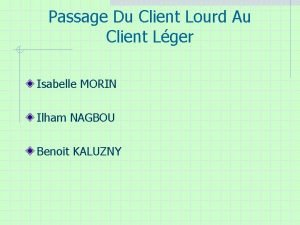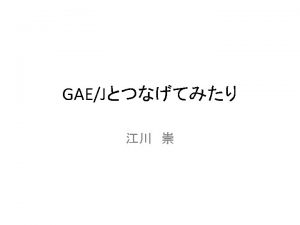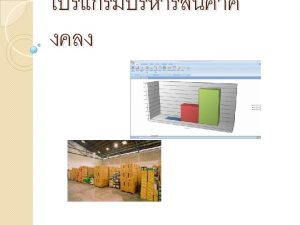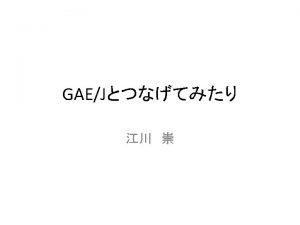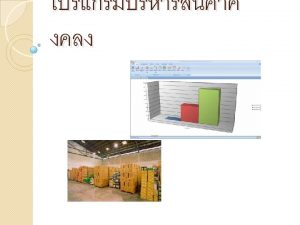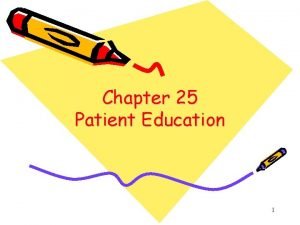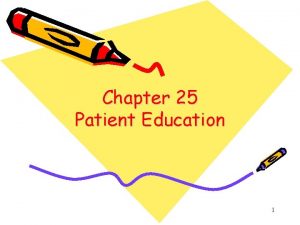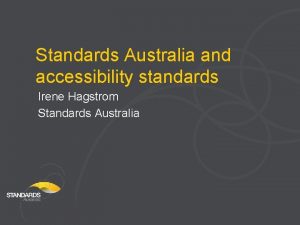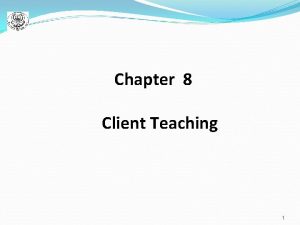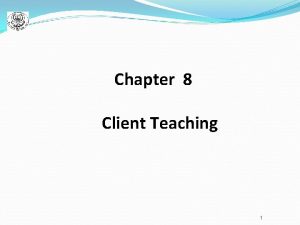CHAPTER 25 CLIENT EDUCATION STANDARDS FOR CLIENT EDUCATION




















- Slides: 20

CHAPTER 25 CLIENT EDUCATION

STANDARDS FOR CLIENT EDUCATION The Joint Commission (TJC) sets standards for client and family education. Successful accomplishment of standards requires collaboration among health care professionals.

STANDARDS FOR CLIENT EDUCATION: TJC Standards: Patient/family receive education specific to patient’s assessed needs, abilities and readiness to learn Patient education is interactive Any discharge instructions given to the patient/family are provided to the organization responsible for patient’s continuing care The organization plans and supports the provision and coordination of patient/family activities and resources

TJC FOCUS Adherence to standards Evidence of priorities, individualized care Evidence of patient/family response Information is understandable, usable to patient 90 -100% of all hospitalized patients taught Non-English speaking patients, patients with low literacy skills and patients, with sight, hearing, and processing difficulties AEB patient education outcomes documented in pt chart Continuity of care

TJC HOT BUTTONS Teaching about potential food/drug interactions Culturally relevant strategies and resources Age appropriate teaching Assessment of readiness to learn Teaching about personal hygiene for patients who can no longer follow normal routine Teaching about home medications

TJC HOT BUTTONS Diet teaching for pts who are on a new or modified diet Proof of teaching through documentation Policy of how teaching is to be accomplished across the continuum of care

PURPOSE OF CLIENT EDUCATION • To help individuals, families, or communities achieve optimal levels of health • Client education includes: – Maintenance and promotion of health and illness prevention – Restoration of health – Coping with impaired functioning

TEACHING AND LEARNING Teaching An interactive process that promotes learning Learning The purposeful acquisition of knowledge, skills, behaviors, and attitudes Objective Statement of what learners should be able to do after successfully completing a given course of instruction; there should be a measurable change in behavior. .

ROLE OF THE RN IN TEACHING AND LEARNING Patient education has become a professional expectation and a legal duty of nurses The RN initiates client teaching LPN can reinforce but can’t initiate Teach information the client and family needs to make informed decisions regarding their care Determine what clients need to know Identify when clients are ready to learn Evaluate learning

DOMAINS OF LEARNING Cognitive Includes all intellectual behaviors and requires thinking Affective Deals with expression of feelings and acceptance of attitudes, opinions, or values Psychomotor Involves acquiring skills that require integration of mental and muscular activity

BASIC LEARNING PRINCIPLES Motivation to learn Addresses the client’s desire or willingness to learn Ability to learn Depends on physical and cognitive abilities, developmental level, physical wellness, thought processes Learning environment Allows a person to attend to instruction

INTEGRATING THE NURSING AND TEACHING PROCESS A relationship exists. The nursing and teaching process are not the same. The nursing process requires assessment of all data. The teaching process focuses on the client’s learning needs and ability to learn.

ASSESSMENT • Nurses need to assess all factors that influence content, ability to learn, and resources available: – Expectation of learning – Learning needs – Motivation to learn – Ability to learn – Teaching environment – Resources for learning – Health literacy and learning disability

NURSING DIAGNOSIS Select the nursing diagnosis that reflects the client’s learning needs after the assessment is completed. Clarifying the diagnosis by domain helps the nurse focus on the subject matter and teaching methods. Nursing Diagnosis: Deficient Knowledge

PLANNING Determine goals and expected outcomes that guide the choice of teaching strategies and approaches with a client: Set priorities Select timing to teach Include client When is pt most attentive? Organize the teaching material Order of information

IMPLEMENTATION • Maintain learning attention and participation • • Build on existing knowledge • • • Active participation Pt will be bored if information already know is covered Select teaching approach • Telling-teaching vital limited information; no opportunity for feedback • Participating-client helps decide content; nurse guides and advises pertinent information • Entrusting – provides client opportunity to perform self-care; return demonstration • Reinforcing – before or after desired learning behavior Incorporate teaching with nursing care

IMPLEMENTATION • Select appropriate instructional methods • One on one instruction – at bedside, MD office, home; nurse directly shares information • Group instruction – both lecture and discussion • Preparatory instruction – before tests or procedures to be performed; describe physical sensations of procedure, cause of sensation, normal and not normal • Demonstration and return demonstration • Analogies – nurse translates complex language or ideas into words or concepts client understands • Role play – rehearsing a desired behavior • Simulation – teaching clients problem solving, application and independent thinking

IMPLEMENTATION Illiteracy and other disabilities Cultural diversity Watch medical jargon, keep teaching sessions short, provide teaching material at appropriate educational level (p. 379, box 25 -8) Language barriers- provide educational materials in appropriate language; translators Using different teaching tools Printed materials: programmed instruction, computerized instruction Nonprint materials - diagrams, graphs, charts, pictures, physical objects Audiovisual materials

IMPLEMENTATION Special needs of children and older adults Older adult Visual and hearing changes: offer larger print materials Reduced short term memory: introduce new information only when one set of information has been learned Children If at all possible include family members Use of medical equipment – lets children become comfortable with the equipment

EVALUATION Necessary to determine whether the client has learned the material Helps to reinforce correct behavior and change an incorrect behavior Success depends on the client’s performance of expected outcomes
 Effciency
Effciency Client lourd vs client léger
Client lourd vs client léger Thin client vs thick client
Thin client vs thick client Factors determining service standards
Factors determining service standards Kontinuitetshantering
Kontinuitetshantering Novell typiska drag
Novell typiska drag Nationell inriktning för artificiell intelligens
Nationell inriktning för artificiell intelligens Ekologiskt fotavtryck
Ekologiskt fotavtryck Varför kallas perioden 1918-1939 för mellankrigstiden?
Varför kallas perioden 1918-1939 för mellankrigstiden? En lathund för arbete med kontinuitetshantering
En lathund för arbete med kontinuitetshantering Personalliggare bygg undantag
Personalliggare bygg undantag Tidböcker
Tidböcker Sura för anatom
Sura för anatom Densitet vatten
Densitet vatten Datorkunskap för nybörjare
Datorkunskap för nybörjare Tack för att ni lyssnade bild
Tack för att ni lyssnade bild Debattartikel mall
Debattartikel mall Magnetsjukhus
Magnetsjukhus Nyckelkompetenser för livslångt lärande
Nyckelkompetenser för livslångt lärande Påbyggnader för flakfordon
Påbyggnader för flakfordon Formel för lufttryck
Formel för lufttryck

